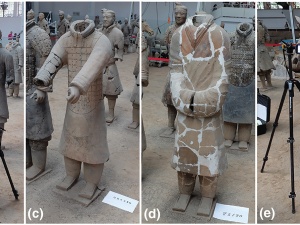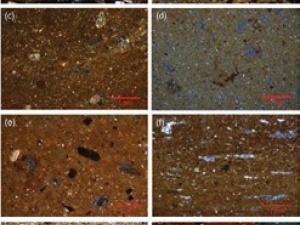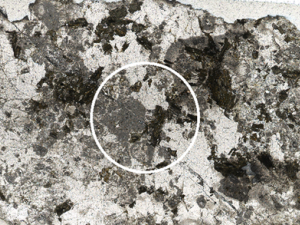Quantifying Heterogeneity of Small Test Portion Masses of Geological Reference Materials by Portable XRF Spectrometry: Implications for Uncertainty of Reference Values
Abstract
There is an increasing use of analytical macro-beam techniques (such as portable XRF, PXRF) for geochemical measurements, as a result of their convenience and relatively low cost per measurement. Reference materials (RMs) are essential for validation, and sometimes calibration, of beam measurements, just as they are for the traditional analytical techniques that use bulk powders. RMs are typically supplied with data sheets that tabulate uncertainties in the reference values by element, for which purpose they also specify a minimum recommended mass of material to be used in the chemical analysis. This minimum mass may not be achievable using analytical beam techniques. In this study, the mass of the test portion interrogated by a handheld PXRF within pellets made from three silicate RMs (SdAR L2, M2 and H1) was estimated using a theoretical approach. It was found to vary from 0.001 to 0.3 g for an 8 mm beam size and 0.0001 to 0.045 g for a 3 mm beam. These test portion masses are mainly well below the recommended minimum mass for these particular RMs (0.2 g), but were found to increase as a function of atomic number (as might be expected). The uncertainties caused by heterogeneity (UHET) in PXRF measurements of the three RMs were experimentally estimated using two different beam diameters for eighteen elements. The elements showing the highest levels of heterogeneity (UHET > 5%) seem generally to be those usually associated with either an accessory mineral (e.g., Zr in zircon, As in pyrite) or low test portion mass (associated with low atomic number). When the beam size was changed from nominally 8 to 3 mm, the uncertainty caused by heterogeneity was seen to increase for most elements by an average ratio of 2.2. These values of UHET were used to calculate revised uncertainties of the reference values that would be appropriate for measurements made using a PXRF with these beam sizes. The methods used here to estimate UHET in PXRF measurements have a potential application to other analytical beam techniques.
Full article:
Source: Preview Image: Artography/Shutterstock






